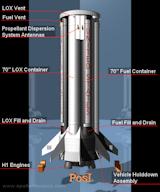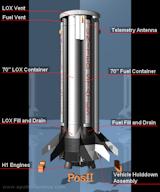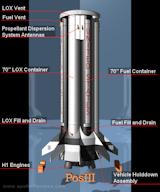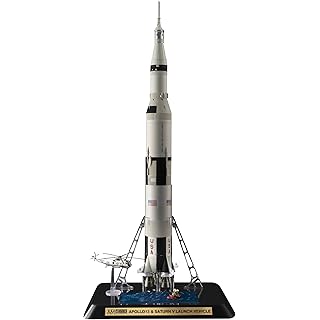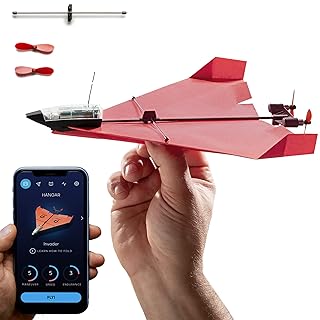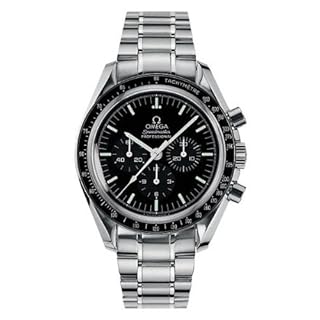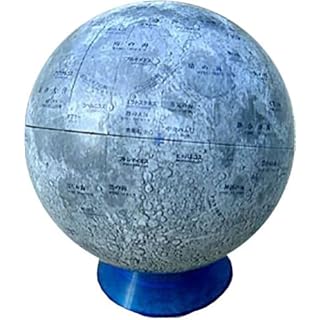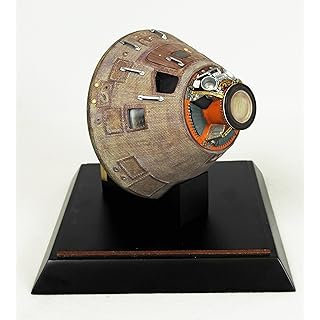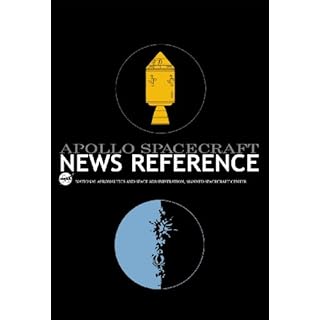S-IB First Stage
- Diameter : 21.6ft (6.6m)
- Height : 80.2ft (24.4m)
- Burn time :2.55min approx
- Manufacturer :Marshall Space Flight Center and Chrysler Corporation
- Altitude at burnout : 42miles(68km)
Propellant Containers


RP-1 rocket fuel was used for S-1B. Each c supplied RP-1 and LOX to one inbord and one outbord engine. And two cut-off sensor were installed on each containers. Inbord engines were cut off when the RP-1 or LOX was decreased to their level. Outbord engines shutdown occurs approximately six seconds after inbord engines cut-off.
Each containers had fifteen discrete level sensors and one continuous level sonsor. These sensors permit to monitor fuel level during flight.
Fuel containers were pressurized by helium for 2 minutes 33 seconds prior of the launch. Then, pressure is kept by the fuel pump of the engine during the flight.

Spider Beam Unit Assembly
At the top of S-IB, the framework of the octagon like the nest of the spider was installed. It was called Spider Beam. A hole is made here in the drill for mate with S-IVB at the launch pad.
Fire Detection System
Four set of eight temperature sensors were installed in after Thrust Structure. When fire is detected before the engine ignition, it was informed to Launch Control Center, then cold GN2(Gaseous Nitrogen) was jetted in engine compartment. If fire is detected between engine ignition, GN2 was jetted and engine are cut-off. When it wasn't extinguished by jetting of GN2, Water Quench operation is done by launch control center, And water is jetted.

Range Safety System
Air Force Missile Test Center safety regulations require missiles using liquid propellants to have systems that accomplish zero thrust and propellant dispersion. Range Safety System is carried with S-IB to fill this regulations. A ground-based command transmitter sends the frequency-modulated audio-tone coded signals. Four receiver antennas mounted in sets of two command receivers receives these command, then linear-shaped charge on each containers is ignited, containers is ripped, rocket is broken.

Electrical System
S-IB carries two independent 28VDC bus system. Prior to launch, primary power is supplied by the launch complex through umbilical connections. Approximately 25 seconds before engine ignition, power transfer to battery occures. One unit usually supplies a power, one more unit does a take-over if failure occurs.
Many measurement equipments on S-1B needs 5VDC. 28V power is converted into this.

Control
A switch selector is installed on instrument compartment No.2 for S-1B flight control. This receives digital commands from IU then transmit them to the main distributor. Two control accelerometers are attached to the spider beam. This accelerometerssense the lateral acceleration. This information is used in the vehicle control system to reduce structural loading and control vehicle deflections due to lateral winds.
H-1 Engine
S-IB carries four fixed inbord and four steerable outbord H1 engines. And total thrust reaches 1.6 million pounds. This is uprated S-3D Thor/Jupiter missile engine improved by Rocketdyne, a division of North American Aviation, Inc. Initially, the thrust of the H-1 engine was 165,000 pounds on Saturn I. It becomes 200,000 pounds adopt on Saturn 1B, then reaches 205,000 pounds at last.




